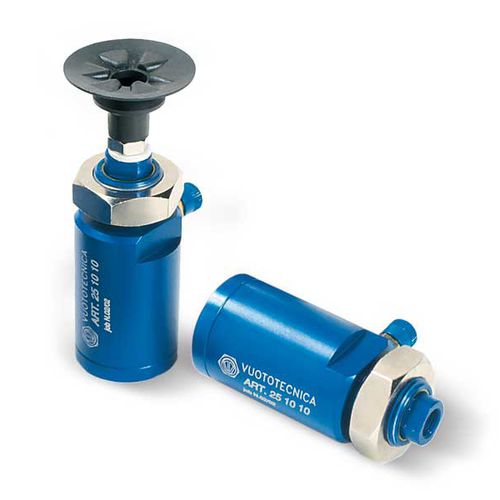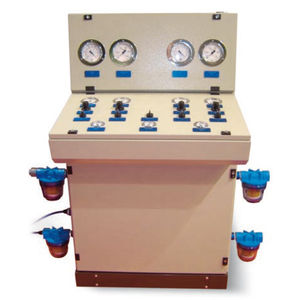
- Company
- Products
- Catalogs
- News & Trends
- Exhibitions
Pneumatic cylinder 25 seriesdouble-actingfor lifting applicationshigh-speed

Add to favorites
Compare this product
Characteristics
- Type
- pneumatic
- Configuration
- double-acting
- Applications
- for lifting applications
- Other characteristics
- vacuum
- Stroke
Max.: 30 mm
(1.181 in)Min.: 17 mm
(0.669 in)
Description
Vacuum cylinders
The cylinders described on this page are vacuum operated.
By creating a vacuum in the anterior chamber of the cylinder, the piston's integrated rod protrudes, overcoming the opposing spring force.
The piston is pushed by the air at atmospheric pressure that gets into the cylinder’s rear chamber through the hollow stem.
The greater the pressure differential between the front chamber under vacuum and the rear chamber at atmospheric pressure, and the larger the piston thrust force will be.
The stem returns into position in two ways:
1) By preventing the atmospheric air from entering through the stem hole and with the vacuum inserted, the pressure differential inside the cylinder is removed. Under this condition, the thrust spring and the atmospheric pressure forces prevail on the stem which is thus pushed into its initial position.
2) By excluding the vacuum, the atmospheric pressure is restored in both the cylinder chambers. Also in this case, being the pressure differential removed, the stem returns to its initial position pushed by the thrust spring.
The first of these two methods is the true operating principle for which this cylinder has been designed. When a vacuum is created, in fact, a vacuum cup mounted on the stem of the perforated cylinder will be brought rapidly into contact with the object to be taken. The object is then automatically lifted and remain gripped during the whole time the vacuum stays engaged.
VIDEO
Catalogs
No catalogs are available for this product.
See all of VUOTOTECNICA‘s catalogs*Prices are pre-tax. They exclude delivery charges and customs duties and do not include additional charges for installation or activation options. Prices are indicative only and may vary by country, with changes to the cost of raw materials and exchange rates.











